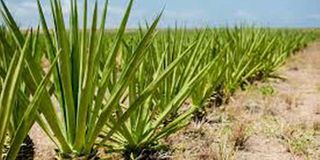Brace for new challenge, sisal stakeholders told

What you need to know:
Agriculture minister Charles Tizeba said the crop could once again be thrown into the stiff competition like that of the 1980s, which resulted in a serious fall in production unless immediate measures were taken to expand the market.
Tanga. The government has advised sisal farmers to brace for a new threat from mass production of biopolymers in Europe.
Agriculture minister Charles Tizeba said the crop could once again be thrown into the stiff competition like that of the 1980s, which resulted in a serious fall in production unless immediate measures were taken to expand the market.
He was responding to Tanga Regional Commissioner Martine Shigela’s request for the government to consider including sisal on the list of strategic crops.
Biopolymers are widely used in developed countries, replacing conventional polymers as food packaging materials.
According to Dr Tizeba, while the government agrees with the suggestion of including sisal as a strategic crop because of its potential, sisal stakeholders in general should take steps to cushion the threat.
“We must not sit back as we did during the times of synthetics.” He said one of the major problems facing sisal was an overdependence on the foreign market instead of exploring the domestic market. He said, for instance, the nation could consider whether it was necessary to import jute packaging products instead of using sisal fibres.
“Many users give reasons which are irrelevant on the importation of jute products. But there also a need to look into the capacity of Tanzania’s sisal plants whether their products can meet demand.” He spoke about a lot of foreign exchange being spent of importing packaging materials.
He urged stakeholders to increase the use of the sisal plants from the current two per cent to 98 per cent.
Assistant regional administrative secretary Monica Kinala stressed the need to increase the use of sisal products to expand its internal market
Biopolymers are not new. In the 1850s, a British chemist created plastics from bio-cellulose. Henry Ford, in the early 20th century, experimented with the use of different polymers derived from soy proteins in his automobiles. After that, in the ’70s, biodegradable polymers gained wider interest in the USA during the great oil crisis.
The 1980s brought items such as biodegradable films, sheets and mold-forming materials. Nowadays, a different type of bio-material is usually combined with glass, metals, board and an assortment of fuel-based plastic polymers, or used for food packaging as a pure bio-material.
These materials are applied in various combinations to provide unique properties that ensure the safety and quality of packed food products, from processing, handling, and storage to final use by consumers.
On account of environmental change, biopolymers have been elevated to important roles by customers, financial specialists and worldwide producers in recent years. A few plastic materials with properties similar to those of petroleum-based polymers (frequently called biopolymers) are now available.




